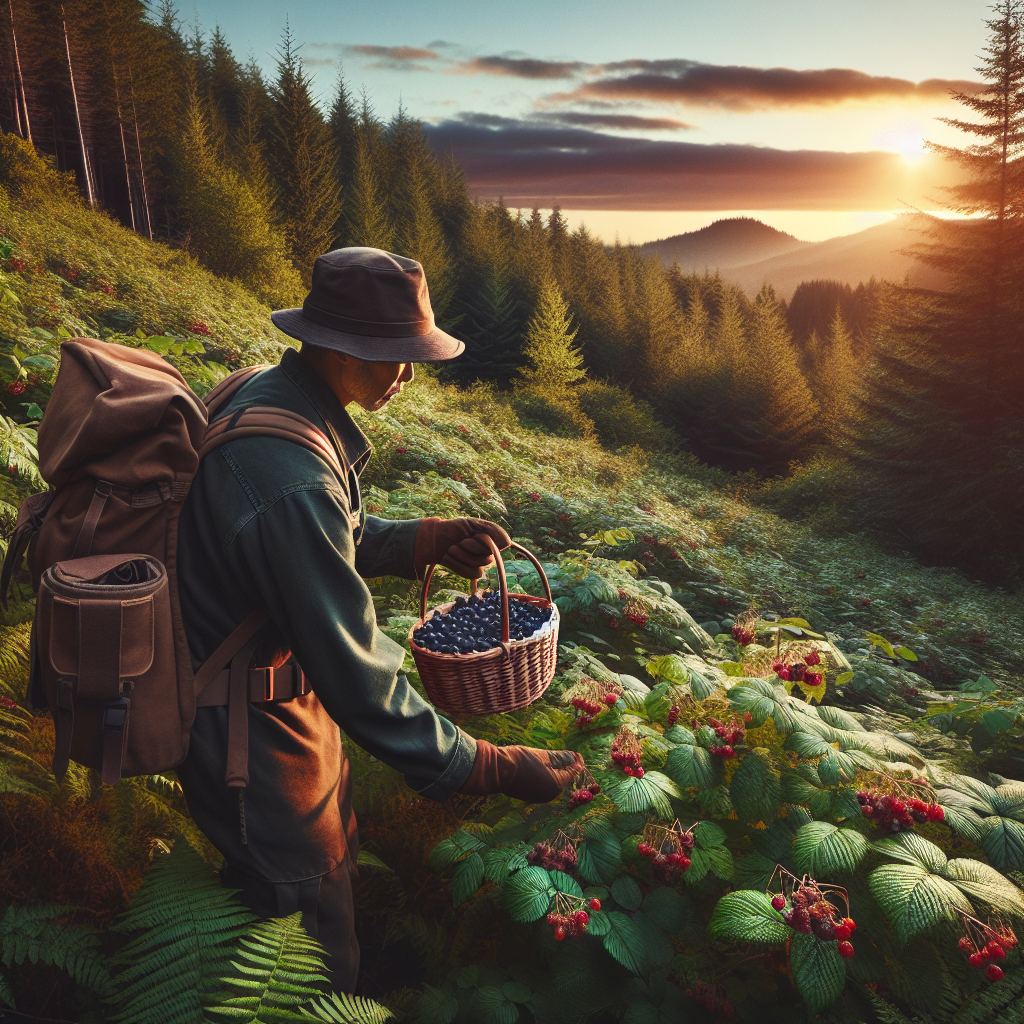Title: Untitled Adventure: A Guide to Foraging Wild Berries in Oregon Safely
Introduction
There’s something incredibly rewarding about foraging for wild berries in the stunning Oregon wilderness. Not only for the joy of unearthing nature’s bounty but also for experiencing the serene beauty of the state’s diverse landscapes. While any enthusiastic forager can embark on this journey, it’s vital to remember that knowledge, safety, and respect for the environment are the three cornerstones of a successful foraging experience.
Knowing Your Berries: Identifying Oregon’s Wild Berries
Oregon offers a diverse array of wild berries throughout its magnificent landscape. In the summer months, you could wander along the Willamette Valley’s green trails and stumble upon ripe, bursting blackberries. In the autumn, take a trek through the picturesque Siuslaw National Forest and discover bushes laden with bright huckleberries. Remember, any berry found should be positively identified before consumption. A friendly chat at local farmers markets in places like Newberg or Albany can provide invaluable insights about berry varieties and their identifying characteristics.
Picking the Right Time: Seasonal Considerations

Foraging wild berries depends largely on the season. Blackberries and salmonberries show up by early summer, dotting the landscape of the Columbia Gorge with their bright hues. Huckleberries and elderberries appear later in the summer, often found in higher altitudes like those around Mount Hood. When fall arrives, look for Oregon grape along the forest floors of the breathtaking Silver Falls State Park.
Stay Safe: How to Forage Safely
First and foremost, environmental awareness and respect are paramount. Remember the grounds you walk are shared with local wildlife. It wouldn’t be Oregon without a black bear or two, especially in areas like the Rogue River-Siskiyou National Forest. Travel in groups, make a moderate amount of noise to alert wildlife of your presence, and most importantly, never feed the wildlife.
Be wary of restricted areas. Private properties, and protected lands like Crater Lake National Park have strict regulations against foraging. Always ensure you’re in public lands where foraging is allowed. Oregon’s smaller state parks and national forests are usually safe bets.
Also, Oregon’s weather is known for throwing curveballs. A sunny morning could suddenly turn into a rainy afternoon, especially on the breathtaking Oregon coast. So, pack your jackets, hats, and sunscreens.
Can I eat this? The Rule of Thumb for Berry Identification
Remember this golden rule locals swear by – “When in doubt, leave it out.” Misidentification can lead to unpleasant consequences. Carry a trustworthy field guide that details local plant life. But a visit to the Tillamook County Pioneer Museum or the Jackson Bottom Wetlands Preserve ahead of your foraging trip could offer hands-on learning about Oregon’s native plants and berries.
Cross-verification is crucial – look at the color, size, and shape of the berry, leaf pattern, even the texture of the bush. When you’re still unsure, it’s more sensible to enjoy the beauty with your eyes, not your taste buds.
Cleaning and Storage: Keeping your Berries Fresh
Once you’ve reveled in the joy of foraging, it’s time to savor your find. But before that, remember to rinse your berries thoroughly, checking for bits of leaves, bugs, or other surprises. Store berries in a cool place, preferably refrigerated, and try to minimize squishing or damaging them.
Conclusion
Foraging for wild berries is indeed an enriching way to experience the authentic spirit of Oregon. But remember, our beautiful wilderness is shared with a myriad of creatures and plants that also call it home. So, forage responsibly, leave no trace behind, and become a part of Oregon’s vibrant foraging community. So, grab a basket, put on your best smile, and venture into the wild with the spirit of a true Oregonian explorer, being equally mindful and excited about the adventure that awaits! Happy foraging!
